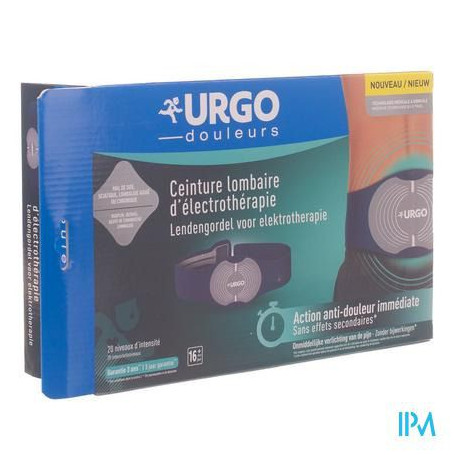Urgo Ceinture Lombaire Electrotherapie
Urgo.
outofstock
block Out-of-Stock
- More infos
- Description
- Use
- Property
- Contra-Indication
- Do not use the seat belt on the following body parts :
- Reviews (0)
"-//W3C//DTD HTML 4.0 Transitional//EN\" \"http://www.w3.org/TR/REC-html40/loose.dtd\">
GERD lumbar Belt electrotherapy helps relieve your back pain : low back pain acute or chronic, with or without sciatica (after the opinion of a health professional).
The belt acts on the nerve fibres in the painful area by blocking the transmission of pain to the spinal cord and the brain.
This action also helps to stimulate the release of endorphins, the molecules at the origin of the destruction of the natural pain.
Reusable and easy-to-use it is suitable for people over the age of 16 in search ofa solution non-effective medication and without side effects
- The control unit is fixed in the holder with a magnet. To remove the control unit, it is first necessary to push it towards the outside before the get to the top.
- Insert the batteries in the control unit.
- Moisten the 4 black surfaces (electrodes) and the bottom of your back evenly with water
- Adjust the belt around your waist so that the logo URGO is positioned in the middle of your spine
- Attach the belt using the scratch. Insert the control unit into the mounting bracket.
- To turn on the control unit, press and hold the on/off button. To choose your program, press the p button.
- Once your selected program, press the intensity knob ?. To start the program, slightly increase the intensity level of the stimulation.
- At any time during the use, you can :
- Reduce the level of intensity using the intensity knob.
- Put the programme in pause by briefly pressing the on/off button. The symbol II appears.
- Turn off the device pressing about 3 seconds on the on/off button.
Composition of the box :
- 1 lumbar belt electrotherapy unit with control
- 1 extension
- 3 AAA battery 1.5 V
3-year warranty.
- At the level of the head : it can cause cramping.
- At the level of the neck/carotid artery : this can lead to a cardiac arrest
- At the level of the throat/larynx : this can lead to muscle cramps which may lead to asphyxiation.
- At the level of the rib cage : this may increase the risk of ventricular fibrillation and lead to cardiac arrest.




